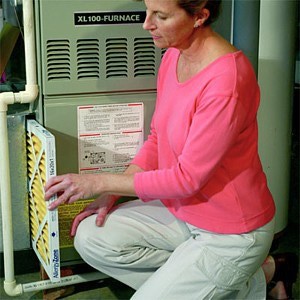07 Mar 15 Tips to Prep Your Home for Spring
With the passage of Daylight Savings Time changing and the promise of spring not far away, it’s a great time to start prepping your home for warmer weather.
If you’re like most of us, you’ve neglected your home during the winter months and concentrated instead on the holidays, comfort food and staying warm. Now it’s time to get to work on your house and prep it for spring. We’ve rounded up some tips from Elite Craft Homes to help you get started:
- You will soon be running your air conditioner instead of your furnace on a consistent basis, so check to make sure it is working properly. If you wait to check until the first hot day you may be sorry, so do it now before your need is dire. Also if you encounter a problem it will much easier to schedule an HVAC contractor to come look at your system now before they are swamped with people who wait until that first hot day hits.
- Make sure you change your HVAC filter, and continue to do so every month.

- Inspect and clean your clothes dryer vent to make sure it is clear of lint and will function properly (we recommend you do this weekly to appreciate maximum power from your dryer and to prevent fires).
- If you have a range hood, make sure that is clear of any debris that may have blown in during the fall and winter months.
- If you have a refrigerator with an icemaker or a water dispenser, check the filter and see if it needs to be replaced.
- Inspect your roof for damaged, loose or missing shingles and have them replaced.
- Examine the flashing around the chimney, furnace vents, plumbing stacks and roof edges.
- Clean debris from your gutters and downspouts so that water drains the way it is supposed to. Also make sure your downspouts are directed at least 5 feet away from your house to prevent water from puddling next to your house.
- Trim back any tree branches or shrubs that may be touching your home and may create an excellent path for bugs to enter your home. This can also damage the exterior as the wind bushes the branches back and forth against your house.
- Remove any dead branches that could snap off in a windstorm and damage your roof or any other part of your home.
- Clean out basement window wells
- Inspect and replace if necessary caulk on windows, doors, and other penetrations such as: dryer vent, cable and phone line, and gas line. You will also want to inspect location where two types of building material meet, for example, where your brick meets your stucco or siding. Make sure these joints are caulked to prevent unwanted moisture from entering your home and opening up the possibility of mold.
- Inspect all exterior surfaces. Touch up all areas that need paint or staining to keep materials from deteriorating further.
- Inspect the grading around your home, water should drain away from your foundation on all sides. If water pools next to your foundation it is very possible you will be in for a wet basement. If you find a problem, fix the grade by filling the low spots with dirt and compacting. The No. 1 cause of basement flooding is water from rain gutter downspouts pooling against the foundation.
- Make sure all sprinkler heads are pointed away from the side of your home and are not spraying the outside walls. This can cause water to find a way inside the walls of your home.
Source: Elite Craft Homes
Image sources: freshome.com, about.com

